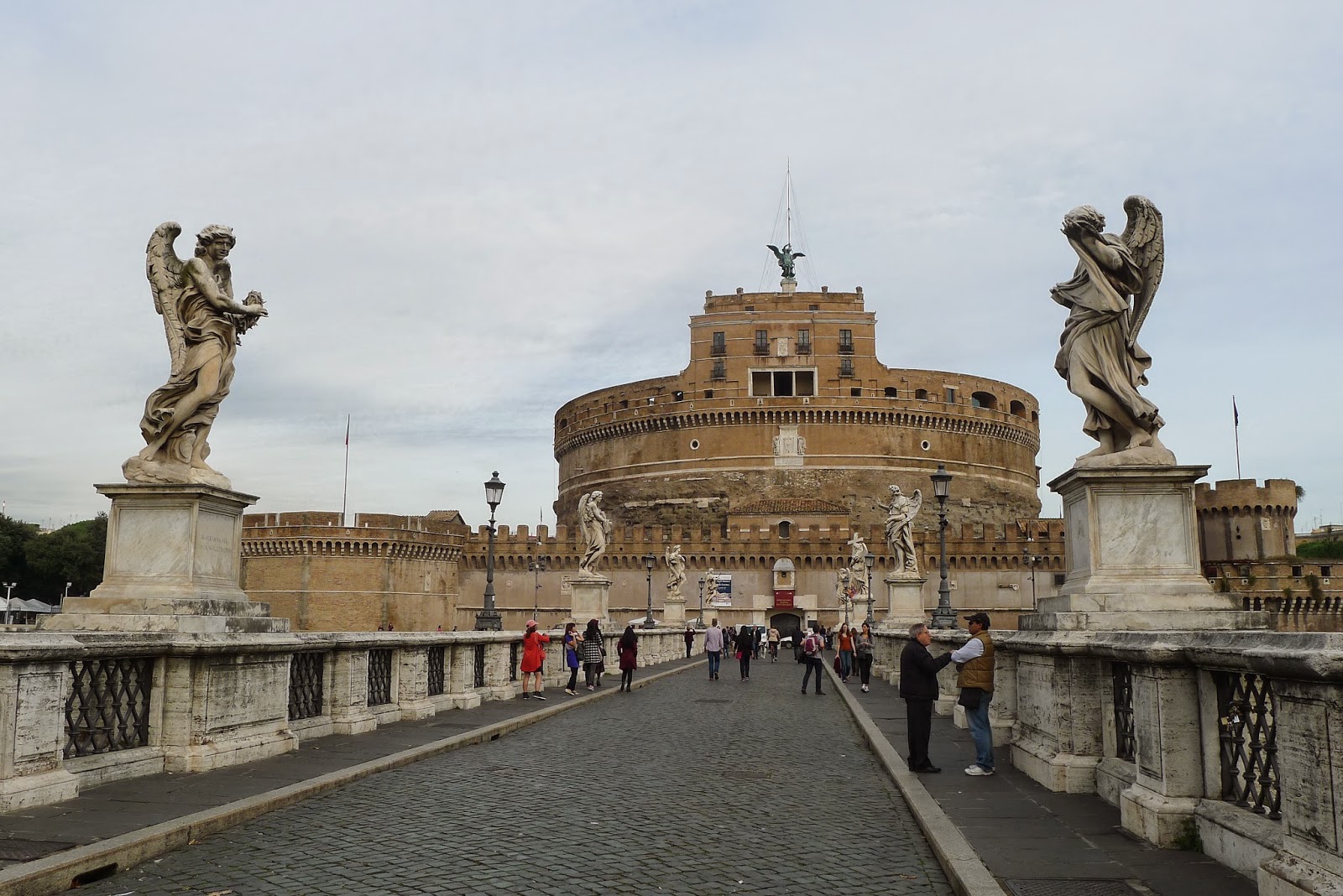Rome is filled with exhilarating sights that can attest to its old-world grandeur. Last month, I was able to fulfill my dream of spending my birthday weekend there. Here are some memorable Roman sites for me:
1. Colosseum (aka Flavian Ampitheater)
Hiking this is quite a feat for the knees. Built of concrete and stone during the reign of emperor Vespasian in 72 AD, his successor Titus inaugurated and completed it in 80AD with a bloody combat lasting many weeks, between gladiators and wild beasts.
The stadium could hold as many as 87,000 spectators. Seats were sectioned in three levels, dividing the people by social rank and gender. Public spectacles such as mock battles, animal hunts, executions and reenactments were for free. However, spectators had to obtain a terra-cotta disc or tessera to enter.
Nowadays, people have to pay for admission to fund the careful monitoring of cracks and structural weaknesses. It is quite scary to stand at its foot and feel the subway vibrations below.
2. Arch of Constantine
Next to the Colosseum is a triumphal arch erected by the Senate in 315 AD to honor Constantine’s defeat of the pagan Maxentius at the battle of the Milvian Bridge in 312 AD. Arco di Constantino or the Arch of Constantine marks a period of great change in Rome’s history as Constantine ended the centuries-long persecution of Christians after his conversion.
3. Pompeii
Can’t get enough of coliseums? After 2 train rides from Rome’s Termini, one can enjoy exploring other coliseums and archeological wonders in Pompeii.
Among which is 5th Century BC Teatro Grande in the east still used by some performances today; and Anfiteatro in the western end, one of Italy’s most complete and oldest ampitheaters, dating from 80 BC.
Although it used to be Italy’s most important commercial center, Pompeii was completely destroyed by Mt. Vesuvius on Aug 24, 79 AD.
Effectively frozen in time with a thick layer of ash for almost 2,000 years, the excavated ruins provide an unparalleled insight into the everyday life of the ancient Romans. People can still admire the notoriously erotic art in their bathhouses, and the majestic altars for their gods.
4. Vatican
For art history aficionados and Catholic devotees, you shouldn’t miss a trip to the tiniest sovereign state, the Vatican City.
Aside from the public mass on Sundays, each Wednesday, whenever the pope is in Rome, pilgrims get a chance to catch a glimpse of his Holiness. People from all over the world start coming in at 8 in the morning to get good seats in the Paul VI Hall of Audiences or in St. Peter’s Square.
There are those who avail of the free tickets three days in advance from the Swiss Guards by the bronze doors just after the security at St. Peter’s. While others download a request form and fax it to the Prefecture of the Papal Household.
Aside from the natural high and deluge of blessings you may get from getting to see and pray with the pope, nothing else quite lives up to the awe-inspiring collections of the Vatican Museums. A 15-minute walk from St. Peter’s, it’s a vast treasure trove of paintings, sculptures, and other works of art collected by the popes through centuries. The museums include several monumental works such as the Chapel of Beato Angelico, the Raphael Rooms, Loggia, the Borgia Apartment and the much-celebrated Sistine Chapel… where unfortunately it was forbidden to take pictures.
5. Castel Sant'Angelo
For Dan Brown fans, Castel Sant’ Angelo has an irrevocable appeal. The bulky cylindrical fortress on the Vatican side of the Tiber has a complex history and is known for its torture chambers utilized in the medieval period. Too bad the dungeons are only usually open on summer evenings.
Aside from classical music and jazz in summer, one can also enjoy the sight of dogs romping amidst the lush gardens.
6. Navona
Just across the Vatican and Castel Sant’ Angelo lies Rome’s true heart…the Centro Storico or the historic center. It flourished during the Renaissance and at present, its streets and alleys are crammed with mysterious churches, lavish fountains, and excited tourists. There you can find Rome’s most famous square…the splendidly baroque Piazza Navona.
While Rome’s most famous Trevi Fountain is undergoing an extensive cleanup this season, kids and kids at heart can enjoy the other fountains at Navona. Fontana dei Qattro Fiumi or the Fountain of Four Rivers opposite 17th Century Sant’ Agnese in Agone is a typical exuberant Bernini creation. Topped with an Egyptian obelisk, its four stone personifications below symbolize the world’s greatest rivers: the Ganges, Danube, River Plate and Nile. At the southern end are Bernini’s Fontana del Moro or Fountain of the Moor and the 19th Century addition called Fontana di Nettuno or the Fountain of Neptune.
7. Pantheon
The Temple to all the Gods is among the architectural wonders of the world. Originally built in 27 BC by Marcus Agrippa and was entirely reconstructed by Hadrian in the early second century AD. Animals were once sacrificed and burned in the center; and the smoke escaped through its natural light source…the oculus.
But since the 7th Century, the Pantheon has been used as a Catholic Church and it’s informally known as Santa Maria della Rotonda. It also serves as the resting plase of Raphael and two Italian Kings: Vittorio Emanuele II and his successor, Umberto I. It’s still an amazing sight when it rains as a slight haze forms inside when it drizzles.
Brimming with art, food, and history in every corner, Rome will definitely leave any tourist craving for more.
| 









0 comments:
Post a Comment